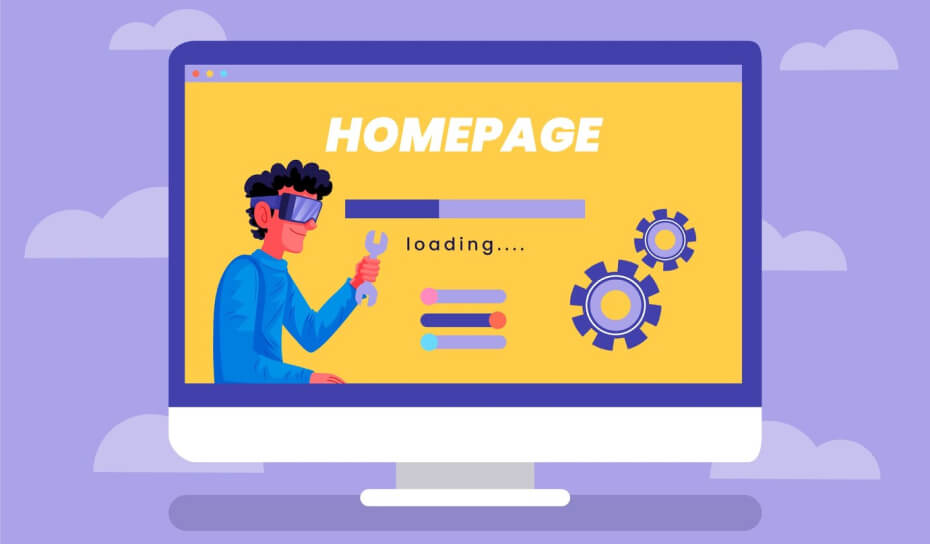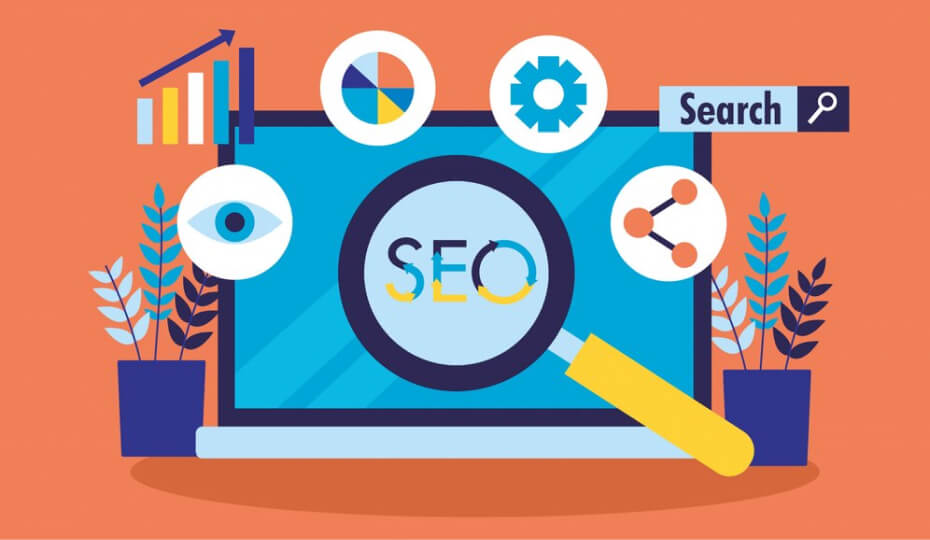Your website serves as a global representation of your brand, much like your company’s online storefront. Even the most exquisitely designed websites, however, struggle to be seen because they don’t adhere to SEO best practices. A badly designed website may turn off visitors and search engines alike, which will ultimately hurt your company’s online performance.
The article that follows lists seven of the most frequent web design errors that negatively impact SEO and offers doable fixes to help you raise your site’s rating and enhance user experience. If you desire the greatest outcomes from SEO and site design, you’ll realize that following pointers are useful.
1. Slow Page Loading
The speed at which a website loads has steadily grown in importance in the field of search engine optimization. Page load speeds are becoming increasingly important for search rankings on search engines like Google.
How Important Is Page Load Speed?
A sluggish website makes for a bad experience. The bounce rate rises as a result, telling Google that users aren’t having a positive experience on your website.
To put that in context, experts have shown that if a website takes more than three seconds to load, 40% of viewers will leave.

Fixing Your Website’s Slow Page Loading Speed
Here are a few practical strategies to speed up page loading:
- Identify performance issues: To assess the performance of your website and receive practical suggestions for enhancements, use tools like Google PageSpeed Insights or GTmetrix.
- Compress images: File sizes can be significantly decreased without sacrificing quality with TinyPNG or ImageOptim, which can speed up loading.
- Minify: Eliminating unnecessary whitespace and comments from CSS, JavaScript, and HTML code shrinks file sizes and facilitates page loading.
- Allow browser caching: This enables the local storage of specific files by browsers. As a result, consumers won’t have to download some of those files from your website every time they visit a page.
- Use the power of a content delivery network (CDN): These disperse a variety of content among multiple servers worldwide. No matter where in the world those users are, this leads to reduced latency and quicker page load times.
2. Mobile Responsiveness Issues
According to current statistics, mobile devices account for over 50% of all website traffic. Your website will undoubtedly miss a significant portion of visitors and perform poorly in search engine optimization if it does not function properly on smartphones or tablets.
How to Verify Mobile Responsiveness
The Google Mobile-Friendly Test is the most effective method for verifying if a website is mobile-friendly. You’ll receive a detailed study of how your website functions on mobile devices.
How to Make Your Website Mobile-Friendly
Here are a few potential strategies to guarantee that your website provides a top-notch mobile user experience:
- Apply responsive design: Make use of responsive design techniques, which allow the website to adapt to various screen sizes and resolutions automatically.
- Make touch elements easy to use: On small screens, buttons, menus, and other interactive components should be simple to click.
- Avoid horizontal scrolling: You should optimize your website so that visitors may access material without having to scroll sideways.
3. Missing or weak heading structure
Both search engine optimization and usability depend on headings. They provide a hierarchy of information inside your content and offer it a clear structure that is understandable to both consumers and search engines.
For SEO, Why Are Headings Important?
In order to comprehend the organization and pertinence of the content on your website, search engines need headings. Effective use of headers will make it easier for search engines to index and crawl your content, increasing the likelihood that it will appear highly in search results.
Heading Best Practices
- Use only one H1 tag per page: The page’s primary subject should be specified by this tag.
- Use clear hierarchy: H3 tags should be used for subsections, H2 tags for main parts, etc. Both search engines and users will be able to see the structure clearly as a result.
- Use keywords in your headings where relevant: If you employ your goal keywords in your headings, this will help search engines understand the purpose of your material.
How Heading Structure Errors Can Be Fixed
- Verify the structure of your headings by auditing them with Screaming Frog.
- Any heading structure should have only one H1 tag per page, with the H2 and H3 tags arranged logically in that sequence.
Also read: SEO Best Practices for Creating High-Performing Landing Pages
4. Posting Pictures Without Alt Text
To understand the purpose of the image, they have to rely on the alt text. You may be missing out on a chance to improve your website’s SEO and make it easier for people with visual impairments to use if you are not adding alt text to your photographs.
Why Does SEO Need Alt Text?
The best way to explain to search engines what is on a page is with alt text. Additionally, it provides a description of the image for a screen reader user.

Top Techniques for Alt Text
- Describe the image concisely: Make use of succinct sentences that are sufficiently descriptive to connect to the image’s topic.
- Include target keywords in alt text, where possible: It is a good idea to use keywords in alt text, but avoid packing too many of them in.
How to Include Alternative Text
Make sure to use Ahrefs or SEMrush to check your website for pages that lack alt text.
Every image on your website should include alt text. Make sure every photograph has a distinct description if you have a large collection.
5. Intuitive Navigation
A positive user experience requires intuitive navigation. If users cannot locate what they are looking for more quickly, they will leave your site and visit a competitor’s page instead.
Fixing Navigation Problems
- Create a clean, intuitive menu: Use straightforward categories with subcategories.
- Use internal linking to tie together related pages: This makes it easier for search engines to crawl your site and helps users locate more content. Check your website for dead links by using online tools such as Broken Link Checker and running broken link checkers on a regular basis.
6. Not Encrypted with HTTPS
For a secure online and user data security, HTTPS is essential. Not only is HTTPS secure, but it also affects rankings. Websites without HTTPS are flagged by Google as “not secure,” which will drive away visitors and harm your reputation.

Methods for Using HTTPS
- Purchase an SSL certificate. SSL certificates that allow HTTPS on your website are provided by the majority of hosting companies.
- Make all pages of your website HTTPS: This means that all pages, not only the home page or checkout pages, should be on HTTPS.
7. Using interstitials and pop-ups excessively
Although they work well, pop-ups and interstitials-which retarget huge advertising or banners that are intended to capture leads-can harm your website’s SEO if they are used excessively. These factors disrupt the content of the page and lower the quality of the user experience. The bounce rate may rise as a result, and ranking may likely decline.
How to Fix Pop-Up Problems
- Use of pop-ups should be limited. A person may see them after scrolling down the page or after spending some time on it.
- Whenever a user wishes to exit a page, use exit-intent pop-ups. This is the final chance you will have to catch their attention.
- Make pop-ups easy to close. They don’t have to obstruct crucial information.
Conclusion
In addition to offering a better user experience, a well-designed and optimized website will rank higher in search results. Search engine optimization and web design are two important elements that affect your performance online. You can make your website more search engine friendly and user-friendly by regularly reviewing performance and design concerns, keeping up with SEO trends, and concentrating on user experience.
InCreativeWeb specializes in crafting custom WordPress websites tailored to your brand’s unique identity and goals. From responsive designs to seamless user experiences, we ensure your site is optimized for performance and conversions. Let us transform your vision into a powerful digital presence! Partner with us for Creative WordPress web design solutions. Contact us now!
Author
Jayesh Patel
Jayesh Patel is a Professional Web Developer & Designer and the Founder of InCreativeWeb.
As a highly Creative Web/Graphic/UI Designer - Front End / PHP / WordPress / Shopify Developer, with 14+ years of experience, he also provide complete solution from SEO to Digital Marketing. The passion he has for his work, his dedication, and ability to make quick, decisive decisions set him apart from the rest.
His first priority is to create a website with Complete SEO + Speed Up + WordPress Security Code of standards.